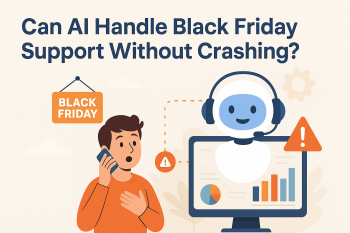Today, most people use online taxi booking services. Most smartphone users have at least one of the many taxi booking apps on their devices. Within the last couple of years, taxi booking apps like Ola & Uber have transformed the way people commute. These apps offer convenience, quick services, and a range of options to suit different budgets. Ola and Uber are two of the most prominent ride-hailing platforms today. Both apps offer similar services but differ in features, business models, and pricing. Let’s compare these two major players in the online taxi booking industry. Here are some statistics to begin the Ola vs Uber taxi booking apps post.
Online Taxi Booking Apps Statistics
- As per Expert Market Research, in 2023, the global taxi market reached an estimated value of USD 252.8 billion, driven by increased urbanization and the rise of ride-hailing apps like Uber.
- The ride-hailing segment is expected to grow at a CAGR of 11.10% from 2024 to 2032 due to the adoption of digital payment systems and electric taxis.
- Asia Pacific leads the market, with countries like India seeing rapid growth in taxi service demand due to increasing urbanization.
- According to StockPe, As of 2022, Ola had over 100 million registered users in India, while Uber followed closely with around 93 million registered users.
Ola vs Uber Taxi Booking Apps | Overview
Ola
Founded in 2010, Ola is an Indian ride-hailing company offering various transportation options such as cabs, auto-rickshaws, and bikes. Ola operates in over 250 cities in India and has expanded to international markets like Australia, New Zealand, and the UK. Ola has positioned itself as a flexible platform catering to a wide range of users by offering budget & premium cab services like Ola Prime & Ola Lux. Ola has become a popular brand in India and abroad.
Uber
Launched in 2009 in the USA, Uber is a global leader in the online taxi booking app industry. It operates in over 70 countries and offers a range of ride options – from budget-friendly UberGo to high-end Uber Black. Apart from cabs, Uber also provides food delivery services (UberEats) and even freight services in some regions. Uber’s worldwide presence and innovative features have made it a household name. It is also used as much as Ola due to its cost-effective pricing.
| Features | Ola | Uber |
| Service Availability | Around 60 countries | Around 70 countries |
| Car Types | Sedans, SUV, Luxury Sedans | Sedans, SUV, Accessible Vehicles, Premium Cars |
| Payment Method | Cash Credit Card, Debit Card, Mobile Wallets | Cash Credit Card, Debit Card, Mobile Wallets |
| GPS Facility | For both Rider & Driver | For both Rider & Driver |
| Review & Feedback Submission | Only available for Riders | Available for both Rider & Driver |
| Sign Up Discounts | $15 Referral Available | No Sign up offers available |
Ola vs Uber Taxi Booking Apps | Business Models of Ola
The business models of Ola & Uber are similar in many ways; however, both companies have taken a slightly different approach to market expansion & services. Let’s find out what!
| Fees | Ola | Uber |
| Base Fare | $2.50 | $2.50 |
| Minimum Fare | $9 | $9 |
| Charge Per Minute | $0.40 | $0.40 |
| Charge Per Kilometer | $1.45 | $1.45 |
| Cancellation Fee | $10 | $1 |
Ola’s Business Model
Ola operates under an aggregator model, connecting passengers with drivers via its app.
Revenue Model
Ola earns revenue through commissions on each ride booked via the app. The company charges drivers a percentage of the fare, ranging from 15% to 20%. Ola also earns from surge pricing during peak hours and from its premium services like Ola Lux.
Driver Partnerships
Ola works with both car owners and rental companies to make sure that there are always enough vehicles available. Drivers are encouraged to join Ola with minimal investment.
Services Beyond Rides
Ola has ventured into bike rentals (Ola Bike) and food delivery in some regions (Ola Foods) – adding more verticals to its business.
How Ola Charges?
As we told you, Ola applies a percentage commission on trips made through its platform. Ola’s annual revenue is $309M as of Mar 31, 2023. And the company today is worth around $4.62 billion.
The fare for each ride is calculated based on several factors, including:
Base Fare
A fixed starting fare is charged at the beginning of the ride.
Distance Fare Per KM
A fee is determined by the distance traveled, which varies by location and the type of vehicle.
Ride Time Charge
A fee based on the total time spent from pickup to drop-off – calculated per minute of travel.
Wait Time Charge
Applied when the driver has to wait for the passenger.
Surge Pricing
An additional fee during periods of high demand for cabs.
Advance Booking Charge
A fee for booking the ride in advance.
Access Fee
A specific charge for auto-rickshaw rides.
Convenience Fee
Charged when in-cab entertainment services are provided.
Airport Surcharge
An extra fee for pickups or drop-offs at airports.
Toll & Parking Charges
Applied based on tolls or parking costs incurred during the ride.
Cancellation Fee
It applies if the ride is canceled under certain conditions.
Service Tax
A tax is applied to the entire trip fare.
These charges make certain that Ola’s pricing structure is dynamic and tailored to different ride conditions and customer preferences. And that’s also how Ola makes most of its money.
Uber’s Business Model
Uber is a giant, which is worth around $166.31 billion. It has generated a staggering revenue of $37.2 billion in 2023. Uber also follows an aggregator model – offering a platform for drivers and passengers to connect. However, Uber has taken the business a step further by diversifying into multiple industries:
How Uber Charges?
Booking Fees
The fee ranges from $1 to $3 depending on the location.
Distance per Mile Fare
Customers are billed based on the distance covered – with a fare applied per mile.
Travel Time Fare
Charges are applied according to the total time spent on the trip.
Taxes
Tax is calculated based on the specific location of the trip.
Appetite Fee
A recently introduced fee that varies based on customer data Uber has collected from previous trips.
Revenue Model
Uber charges drivers a commission on each ride, typically between 20% and 25% – depending on the location. It also benefits from surge pricing and premium services like UberBlack & UberXL.
Innovative Services
In addition to ride-hailing, Uber has introduced UberEats, a food delivery service, and UberFreight, a logistics platform for transporting goods.
Global Expansion
Uber’s business model is more globally oriented, meaning it focuses on penetrating new markets quickly while customizing features to suit local preferences.
Ola vs Uber Taxi Booking Apps | Features Comparison
While both Ola & Uber offer app-based taxi booking services, some differences in their features set them apart. Check these out!
User Interface & Experience
Ola has a user-friendly app with straightforward navigation. It integrates local preferences such as support for multiple Indian languages, which makes it easier for users across different regions to interact with the platform.
Uber is known for its clean, minimalistic interface, which offers a smooth experience for users globally. Uber’s app is available in many languages and is optimized for international users. This makes it easier for travelers and non-English speakers to use.
Ride Options
Ola offers various ride options, including Ola Micro, Ola Mini, Ola Prime, Ola Share, and even Ola Auto. This diverse range caters to different budget needs.
Uber also provides various ride categories, such as UberGo, UberX, UberPool, and UberBlack, covering both affordable & premium services.
Ride Sharing & Pooling
Both apps offer ride-sharing services:
Ola Share & UberPool allow users to share rides with others heading in the same direction, reducing travel costs and carbon emissions. Ola’s pooling service is often priced slightly lower in India compared to Uber.
Payment Methods
Ola accepts a variety of payment options including cash, Ola Money (a digital wallet), UPI, debit/credit cards, and net banking.
Uber also supports cash payments (in India), debit/credit cards, Paytm, UPI, and other local payment methods. Uber was among the first to introduce cashless payments in India via digital wallets.
Driver Ratings & Safety
Both apps emphasize safety by providing users the option to rate drivers and share ride details with friends or family:
Ola offers a “Share Ride” feature and allows users to track rides in real-time. It has emergency contact options within the app for added safety.
Uber also provides real-time tracking and driver ratings, and it goes a step further by offering emergency assistance through an in-app SOS button, which is accessible during the ride.
Booking for Others
Both apps allow users to book rides for others:
Ola has the “Book for Others” feature, enabling users to book rides for family members or friends.
Uber offers a similar option, where you can book a ride for someone else and share the trip details with them.
Ola vs Uber Taxi Booking Apps | Cost Comparison
Both Ola & Uber use dynamic pricing models. The prices vary based on demand, traffic, and time of day.
Base Fares & Surge Pricing
Ola generally has slightly lower base fares than Uber in India, particularly for budget options like Ola Micro and Ola Mini. However, during high-demand times, Ola’s surge pricing can drive up costs significantly.
Uber tends to have higher base fares, especially for premium services like UberX and UberBlack. Like Ola, Uber uses surge pricing, where fares increase based on real-time demand.
Ride Sharing Costs
For ride-sharing services like Ola Share & UberPool, costs are usually lower than solo rides, making them attractive for budget-conscious users. However, Ola Share often provides marginally better pricing than UberPool in India, especially for short distances.
Additional Costs
Both Ola-Uber include additional costs such as taxes, toll fees, and service charges – which are usually included in the final fare displayed to the user. Both companies also offer promo codes and discounts for frequent users, further reducing costs. And, obviously, offers keep coming & going depending on the season.
Bottom Line
Ola and Uber have revolutionized urban transportation with their convenient & easy-to-use taxi booking apps. No doubt about that! While Ola excels in providing affordable rides and local customization in India, Uber’s global reach and advanced features appeal to international users. When comparing the two, it’s essential to consider the features, pricing, and services that matter most to you. Ultimately, both apps offer excellent solutions to meet your daily commuting needs. If you are looking forward to starting an online taxi booking app business, just like these two, we can build a perfect app for you. Be it a clone app or a custom taxi booking app, we, at Provis Technologies, offer top-level mobile app development services to cater to all kinds of businesses. We assist them with their app development & IT support requirements. So, connect with us for taxi booking app development services!
FAQs
Which is better – Ola or Uber?
Both have unique strengths. For a custom taxi app like Ola or Uber, Provis Technologies offers custom development solutions.
How do Ola & Uber differ in business models?
Ola focuses on local markets, while Uber has a global reach. Provis Technologies can help you build an app customized for your target market.
How much does it cost to develop a taxi app?Costs depend on features & design. Provis Technologies provides affordable, scalable taxi app development services. Connect to get quotes and answers to your queries!
Written By
Author's Picks
- How Progressive Web Apps (PWAs) Are Transforming the E-commerce Landscape?
- 11/09/2024
- A Complete Checklist to Build a Secure Mobile App
- 20/08/2024
- Healthcare Mobile App Design: Key Guidelines
- 06/09/2024
Categories
- AI for Startups
- AI in Web Development
- AI Integration
- AI Platforms
- AI Prompt
- AI Tools
- AI Trading Software
- Android App
- Android vs iOS Development
- Angular
- API
- API Development
- App
- app development
- App Idea
- App User Feedback
- Application
- Artificial Intelligence
- Audit Services
- Automotive Industry
- Awards and Recognition
- Business Consulting
- Business Website
- Chatbots
- CRM
- CRM for Financial Advisors
- Custom CRM
- Custom SaaS
- Custom Website
- Customer Service
- dashboard design
- Developing a Mobile App
- Digital Business
- E-commerce
- EMR Integration
- Finance
- Financial Advisors
- Financial Advisors
- GIT
- Health Insurance
- iOS App
- iOS App Development
- IoT Mobile App Development
- IoT Platforms
- IT Audit Services
- IT Consulting
- IT Strategies
- Java Development
- Laravel
- Lean Canvas
- Learning Management System
- Logistics Apps
- Mobile App Development
- MVP
- Native App
- News Aggregator Site
- OTT
- Outsourcing IT
- Payment Gateway
- predictive analysis
- Product Launch Strategy
- Progressive Web App (PWA)
- Prototype
- Recommender Systems
- Ruby
- SaaS
- SaaS Application
- SaaS Business
- SaaS Company
- SaaS Development
- SaaS Product
- SaaS Project
- Sales Funnel
- SEO
- Shopping Cart
- Software Development
- SSL and TLS
- Startup Checklist
- Technology
- Tetradic Color Scheme
- UI/UX Design Company
- Unit Testing
- User Flow
- User Testing
- Web Development
- Web Performance Optimization
- website Maintenance Services
- Website Migration Service
- Website Speed Optimization
- WooCommerce
- WordPress





